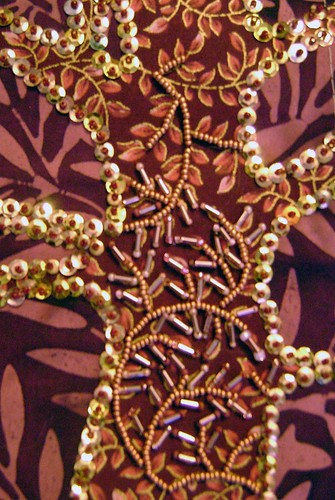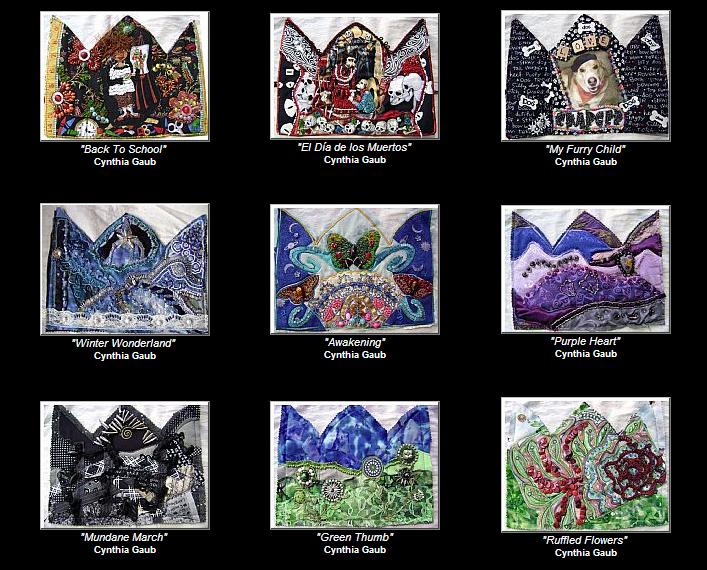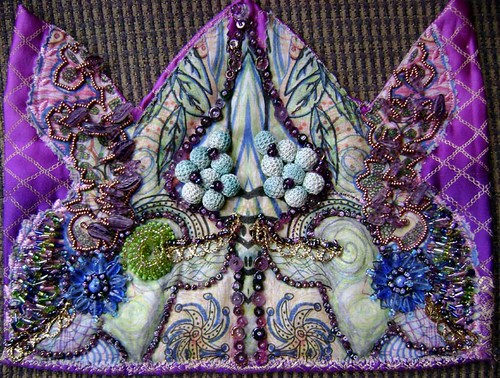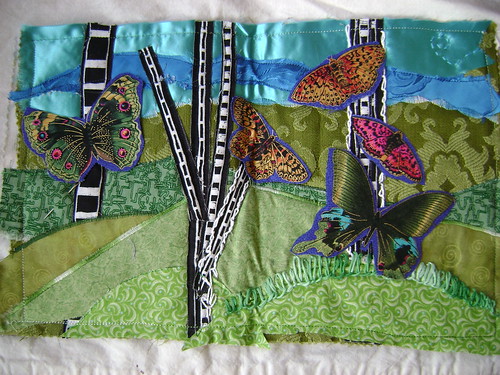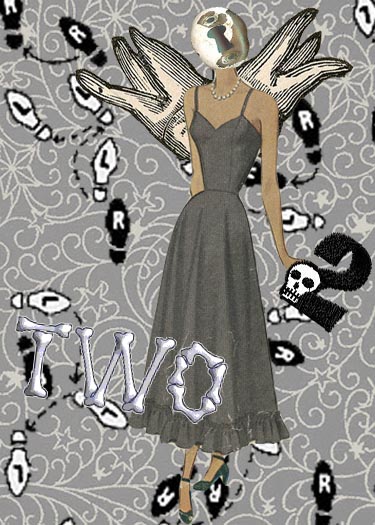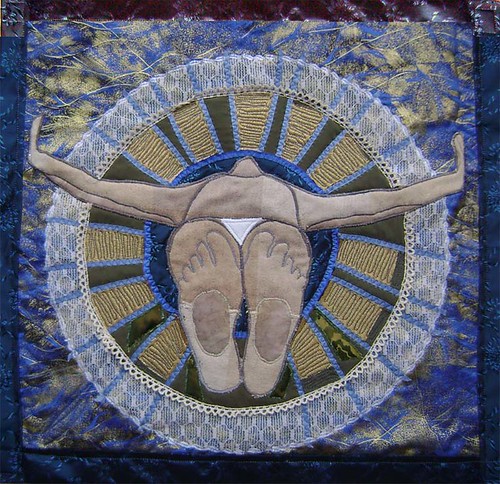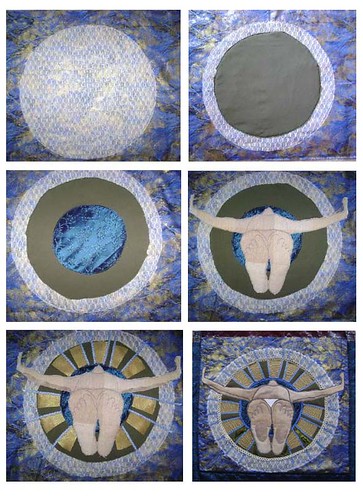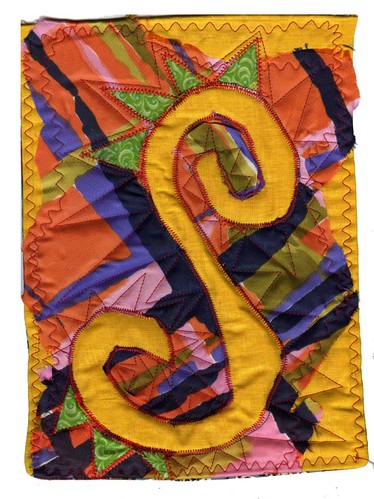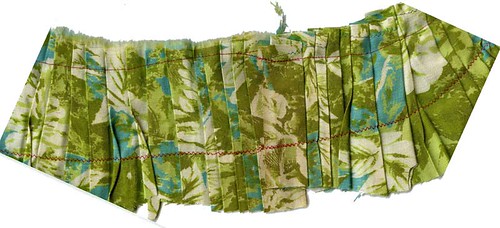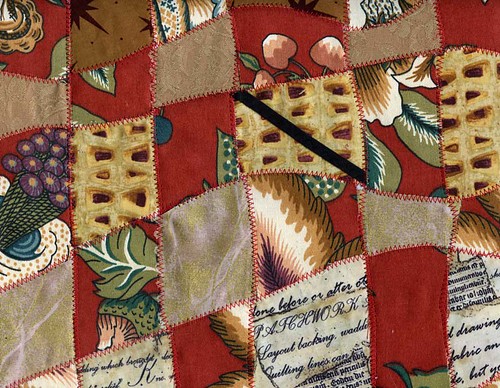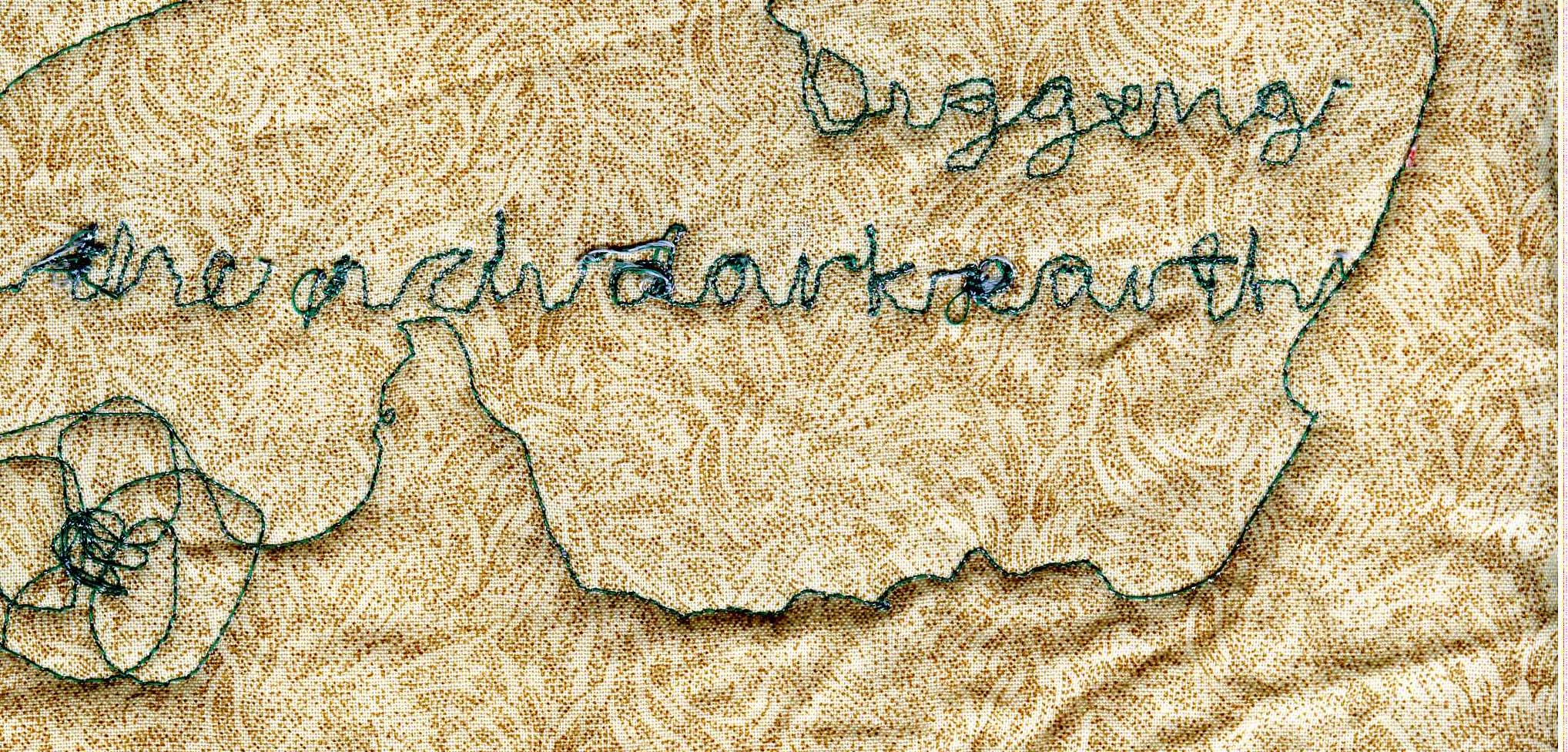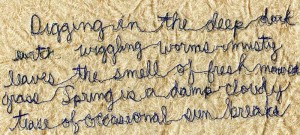More great news from The Pulse (This collaborative project aims to introduce you to new artists, help you get to know familiar faces even more, and allow you access into the creative hearts and minds of a very talented crew of individuals.)Â
 
Today’s question: At least for today, your can’t-live-without blog or website is…
It seems like so many artists have difficulty picking just one website. Although, so many artists pick Flickr as a daily top pick, must-see, website. Always the perfect site for the eye candy junkie. And though it will take hours of webtime, I am determined to check out all the suggestions in this four day long quest for the best websites. Needing some new eye candy in your life? Then check this out!
Marilyn Gallas loves to visit Kelly Rae. As soon as I clicked the link, I realized that I have stumbled across Kelly Rae before. I have seen her book cover, seen photos of pictures of people taking classes from her or being inspired by her work. Her backgrounds are a rich tapestry of luscious color and texture (my two favorite elements of art.) Why she wasn’t already in my google reader is a mystery that was quickly fixed. Then when I went to go add her to my flickr favorites, I saw she was already there! No wonder her art was wonderfully familiar. Now where can I order that book…
Michelle Ward is an artist I have followed on and off but didn’t know she had numerous blogs these days, including one that has some great challenges and tutorials.
Stephanie Hilvitz (BTW…who’s aprons and tablecloths are flirty and wonderfully colorful!) is inspired by Elizabeth’s site Be…Dream…Play… I can see why Stephanie likes to visit Elizabeth’s site. It is filled with a color and vibrancy of life that is infectious.
When I followed Canadian Artist Kate Strickland’s favorite link to an Austrailian based blog by printmaker Jo Horswill, only to I find my friend Bridgette (who just moved from my neck of the woods in Seattle, back to her home in Chicago) It made me realize first how easy it is to get lost in a string of links AND how small and strange the internet world can be.
After looking at a growing list of art websites that are filled with colorful photographs, smiling kids and artists, along with proud displays of creativity, I just had to chuckle to see that James Michael Starr’s favorite site is http://weather.com.
On the whole, I am more visual than verbal. But I was very intrigued to see that Shona Cole’s pick was a Poetry site that hosts podcasts of and about poetry. As a teacher, this is a site I will have to find a use for with my students. I will also have to return to Shona’s sites. I am so impressed with her publication resume.
It is also interesting how many artists listed their own blog or site as a go-to link. I do check on my blog regularly, sadly mostly to delete spam comments, but I wouldn’t have thought to list it as an answer to this question. I am curious as to why they did list it. It makes me think that I put some extra meaning into the question. But with over 80 participants in the survey, the questions are bound to be interpreted in many different ways.
If you haven’t made it over to the Altered Page to check the Pulse… I highly recommend it, as this month it is MY daily go-to site.
